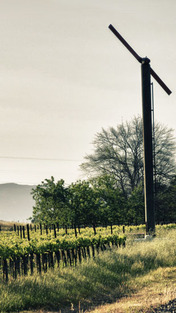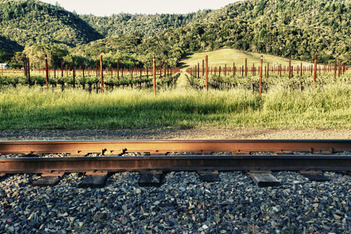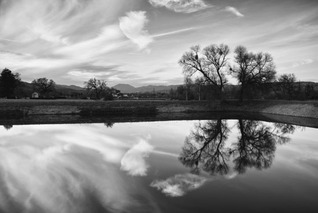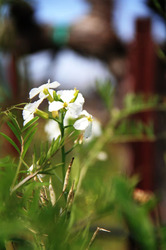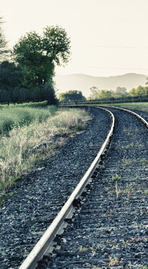Missouri Hopper - Oakville
Story: Lisa Supple
Photography: Cathleen Francisco and Becky Dolcini Castillo
Photography: Cathleen Francisco and Becky Dolcini Castillo
Missouri Hopper Vineyard is one of Napa Valley’s oldest vineyards, located on the west side of Highway 29 on the southern boundary of the Oakville appellation.
The first grape vines were planted here in 1873 by “Napa Charlie” Hopper, who had purchased 640 acres from George Yount, the founder of the Napa Valley town named for him – Yountville. Charles Hopper first came to California in 1841 leading a wagon train of 33 emigrants from Missouri. He returned to Missouri, but made the trip again in 1847 and settled in Napa Valley with his own family and a group of others, including Yount. In 1877, Charlie gifted 100 acres of the land he had purchased from Yount to his daughter Missouri Hopper “for love and affection.”
Missouri was a vivacious, high spirited woman and while rasing four children managed to operate a thriving grapegrowing business and run the Palace Hotel in St. Helena. (Where it was rumored the enterprising Madame Hopper ran more than just a lodging establishment.) In the late 1880s, Missouri’s husband died and she was forced to sell the property.
The vineyard changed hands over the years and was once part of the Kelham family’s Vine Hill Ranch. They called it Vineyard X. In 1996, Napa Valley grape grower Andy Beckstoffer purchased the property and dubbed it Missouri Hopper in honor of the colorful daughter of the man who first planted wine grapes on the land.
The first grape vines were planted here in 1873 by “Napa Charlie” Hopper, who had purchased 640 acres from George Yount, the founder of the Napa Valley town named for him – Yountville. Charles Hopper first came to California in 1841 leading a wagon train of 33 emigrants from Missouri. He returned to Missouri, but made the trip again in 1847 and settled in Napa Valley with his own family and a group of others, including Yount. In 1877, Charlie gifted 100 acres of the land he had purchased from Yount to his daughter Missouri Hopper “for love and affection.”
Missouri was a vivacious, high spirited woman and while rasing four children managed to operate a thriving grapegrowing business and run the Palace Hotel in St. Helena. (Where it was rumored the enterprising Madame Hopper ran more than just a lodging establishment.) In the late 1880s, Missouri’s husband died and she was forced to sell the property.
The vineyard changed hands over the years and was once part of the Kelham family’s Vine Hill Ranch. They called it Vineyard X. In 1996, Napa Valley grape grower Andy Beckstoffer purchased the property and dubbed it Missouri Hopper in honor of the colorful daughter of the man who first planted wine grapes on the land.
|
The Beckstoffer team replanted most of Missouri Hopper between 1997 and 1999. One block of Cab was replanted in 2009-2010. (You can tell this section is newer because of the profusion of mustard, which grows more readily in recently disturbed earth.) Previously Cabernet Sauvignon and Sauvignon Blanc, the vineyard is now about 87% Cabernet Sauvignon and 13% Merlot.
The old vineyard was all on AxR rootstock, which turned out to be not as good at repelling phylloxera as researchers had thought. Today’s vineyard is planted with two kinds of low-vigor rootstocks that have a riparian rooting habit, which means they spread wide instead of deep. These rootstocks help rein in vine growth in the vineyard’s relatively fertile soils. Use of cover crop also helps by reducing soil moisture in the spring. Usually by March, depending on winter/spring rains, the cover crop between the vine rows is knee-high. After budbreak in April, it’s mown down and every other row is cultivated, turned in to nourish the soil. Beckstoffer vineyard manager Jim Lincoln put in a permanent cover crop of native California annuals like fescue and brome. |
|
In Charlie Hopper’s day, the head-pruned vines were dry farmed and the 8 x 8 foot-wide rows cultivated with horse and plow. Now the vineyard is planted 6 x 7 – six feet between rows, seven feet between vines. Trellising is all VSP, the vertical shoot positioning system used for most mid-valley vineyards. The trunk of each vine splits into two cordons that grow about three feet in either direction, then stop.
Row orientation is “perfect,” says Lincoln. The vines get equal sunshine on both sides; one layer of leaves protects the fruit from too much sun. The vines stop growing around July, when they shift their energy from pushing foliage to ripening fruit. |
If needed, the plants may be irrigated in August and September if temperatures are very hot. “If the leaf is cool to the touch in mid morning, that’s good – just like a human whose skin sweats to bring down body temperature. If the leaf is hot, that means it’s shut down and isn’t transpiring water. That means it’s not ripening fruit, so we help it out by giving it a drink,” the vineyard manager explains.
|
Soils: Primarily Bale clay loam, sediment washed down from the Mayacamas Mountains over the years. Due to the increased precipitation up nearer the “bench,” soils are gravelly and relatively deep, becoming darker and less gravelly closer to Highway 29. The Merlot block between the railroad tracks and the highway is heavier Clear Lake clay.
|
Topography: Very uniform, mostly flat with perhaps a 2% grade at the western edge. Vineyards closer to the base of the Mayacamas mountain range that separates Napa from Sonoma may get 20% more precipitation because they’re in the rain shadow, where clouds bump up against the east-facing slope.
|
|
Acreage: 45 acres, about 36 planted to vines.
Rootstock: Primarily 101-14 (71%), remainder 3309 Vineyard Access: Private property,
no public access. |
Varieties: Cabernet Sauvignon – 31.5 acres. Merlot – about 5 acres in a wedge-shaped block between Highway 29 and the railroad tracks that parallel the road.
Clones: Two complementary Cabernet Sauvignon clones: the fruit-forward # 337 clone has larger clusters and softer, rounder tannins; the #4 is smaller, contributing backbone and tannic structure. Just one clone of Merlot (#1) is planted. |
Owned and farmed by:
Beckstoffer Vineyards www.beckstoffervineyards.com Vineyard Manager: Jim Lincoln Wineries who source the fruit: Fruit from this vineyard is highly sought-after; each winery client may purchase a maximum of just 10 rows. Merryvale (Vineyard X Cabernet Sauvignon), Marilyn Monroe Merlot, Alpha Omega, Cain, Arrow&Branch, Bacio Divino, Bure Family Wines, Fetzer, Hess Collection Winery, The Morlet Selection, Robert McKay, Venge Vineyards and Zhang Winery.
|
